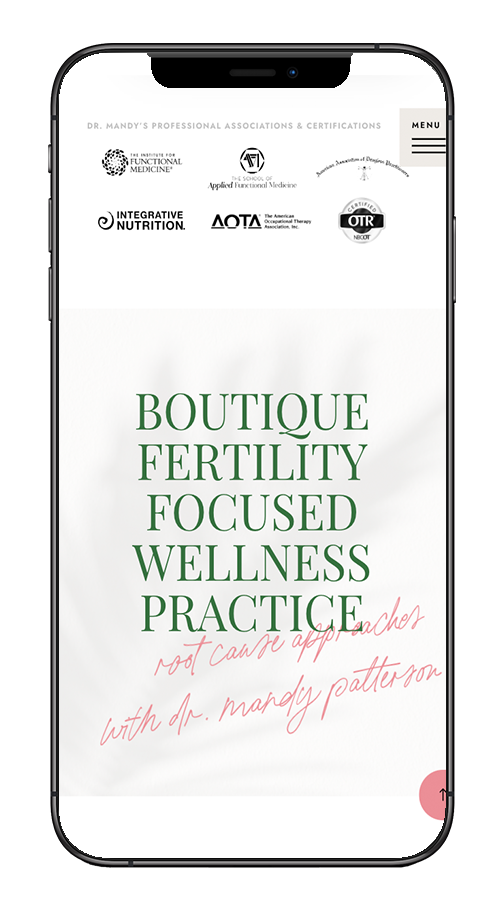Whether it’s fluctuating energy levels, mood changes, or an altered sex drive, hormones are at play. For a quick overview, hormones are substances our bodies produce that transmit information and influence the action of various organs and systems. They are critical actors in the theater of your reproductive system as well as your overall health.
What’s more, hormone patterns are the key to understanding what is going on inside your body.
They provide the clues we need to uncover the underlying problems associated with a host of health problems, especially those associated with the reproductive system.
In this article, you will learn about the common hormone patterns women deal with and what they are trying to tell you!
Overview of Female Reproductive Hormones
We cannot discuss hormone patterns without understanding the basics of female reproductive hormones, which start with the menstrual cycle.
The menstrual cycle is regulated by the complex interaction of luteinizing hormone (LH), follicle-stimulating hormone (FSH), and the female sex hormones estrogen and progesterone.
In addition to menstruation, there are three phases of your cycle:
- Follicular (before the release of the egg)
- Ovulatory (egg release)
- Luteal (after egg release)
Menstruation marks the first day of your cycle and the start of the follicular phase.
During the follicular phase, levels of estrogen and progesterone are low. As a result, the top layers of the endometrium break down and are shed, aka menstrual bleeding. At this time, FSH levels increase slightly, stimulating the development of several follicles in the ovaries.
Each follicle contains an egg. Later in this phase, as FSH levels decrease, only one follicle usually continues to develop, producing estrogen.
Ovulation begins with a surge in LH and FSH levels. LH stimulates the release of the egg, which usually occurs 16 to 32 hours after the surge begins. Estrogen decreases during the surge, and progesterone levels start to increase.
Then, the luteal phase occurs. During this phase, LH and FSH levels decrease. The ruptured follicle closes after releasing the egg and forms a corpus luteum, which produces progesterone. Progesterone and estrogen cause the lining of the uterus to thicken to prepare for possible fertilization.
If the egg is not fertilized, the corpus luteum degenerates and no longer produces progesterone, the estrogen level decreases, the top layers of the lining break down and are shed, and menstrual bleeding occurs, starting your cycle over again.
Common Hormone Patterns
Tracking your hormones with a tool like the Oova Tracker helps identify hormone patterns that speak to potential health problems. Here are the common hormone patterns I see in my practice that indicate a hormonal imbalance.
Anovulatory Cycles
Anovulatory cycles occur when your body fails to release an egg for ovulation. There are multiple underlying root causes of anovulatory cycles, such as changes to medications, malnutrition, higher than normal stress levels, or over-exercising.
The hormone pattern that most often indicates an anovulatory cycle is one of low progesterone. However, reduced estradiol, progesterone, and LH peak levels and increased FSH levels all indicate an anovulatory cycle.
PCOS
PCOS is a condition that causes irregular menstrual periods because monthly ovulation is not occurring and levels of androgens (male hormones) are elevated. This condition makes it extremely difficult to conceive and can result in many frustrating symptoms such as, excessive facial hair growth, acne, and male-pattern scalp hair thinning.
These are the key hormone patterns often seen in women with PCOS:
- Increased androgens (testosterone, DHEAS, and androstenedione)
- Increased Luteinizing Hormone (LH)
- Increased prolactin
- Increased estradiol
- Increased insulin
More specifically, in women with PCOS, multiple small follicles accumulate in the ovary but none of them are capable of growing to a size that would trigger ovulation. The result is an imbalance in the levels of estrogen, progesterone, LH, and FSH. Moreover, androgens increase in women with PCOS because of the high levels of LH, but also because of increased levels of insulin.
The important thing to note about PCOS is that while not entirely reversible, there are a number of lifestyle and diet changes that can reduce or minimize symptoms and increase your chances of conception.
Estrogen Dominance
Estrogen dominance is a term that describes a hormone pattern of elevated estrogen and low progesterone. The discrepancy between these two hormones can create troublesome symptoms such as heavy periods, cramps, acne, and crazy mood swings. While most people have high estrogen and low progesterone, you may also experience high estrogen and normal levels of progesterone. The key is to look at the ratio of estrogen to progesterone.
Why Hormone Patterns are Important in My Practice
Hormones are involved in everything from blood sugar to blood pressure, growth and fertility, sex drive, metabolism, and even sleep. They are paramount to multiple systems throughout your body. Not only that, but as a functional medicine practitioner, hormone patterns help me get to the root cause of your symptoms.
For example, by looking at the rise and fall of your hormones, I can create a protocol specifically geared toward balancing your hormones and optimizing the way your body functions.
I’m Not Trying to Conceive, Why Bother Monitoring Hormones?
I always say reproductive health is an indication of your overall health. If you are struggling with anovulatory cycles or heavy periods, it behooves you to monitor your hormones. The thing about hormones is that they are involved in so many processes that impact your overall health. You can identify health conditions that would otherwise have gone unnoticed by simply tracking your menstrual cycle with a tool like the Oova tracker.
Common Misconceptions About Hormones
To piggyback off the above section, there are many misconceptions people have about hormones. Here are some of the most common misconceptions about hormones I see when people come to my practice:
- Hormone imbalances must be treated with medication.
Hormone replacement therapy supplements the body with specific hormones and is a common recommendation for individuals with hormonal imbalances. However, it is not the only way to relieve your symptoms. Diet, exercise, and lifestyle habits can go a long way in influencing your symptoms and even reversing your condition.
- You have to be emotional to have a hormonal imbalance.
While mood swings are often associated with hormonal imbalances, they are not the only sign that your hormones could be out of whack. On the other hand, you could be experiencing mood swings due to an unusually stressful day at work or other extenuating circumstances.
- Stress doesn’t actually cause hormonal imbalances.
Unfortunately, stress can cause hormonal imbalances. Specifically, chronic stress has a significant impact on hormonal imbalance, as it triggers a chemical ‘tsunami’ in your body. Practicing stress management techniques will help lower stress levels and keep your hormones in a balanced state.
- It is difficult to know what your hormones are doing.
You can understand the functioning of your hormones through diagnostic tests such as blood work or something as simple as a urine test. In fact, Oova is unique in that it captures both LH and progesterone levels in an easy-to-use urine test.
Work with a Fertility Health Coach
If you are interested in learning more about how hormone patterns impact your overall health, consider working with a fertility health coach. I use the Oova fertility tracker with my patients to help them understand and optimize their hormone health for conception and beyond. Learn more by scheduling a consultation here!


















